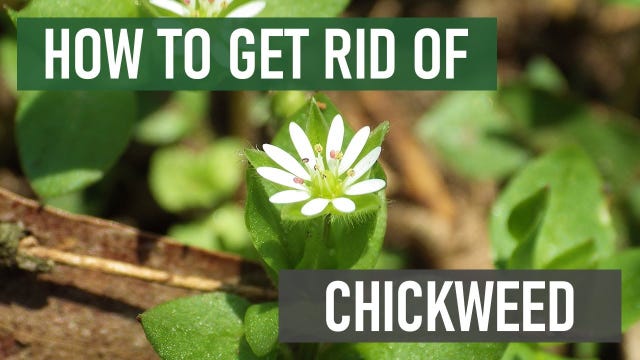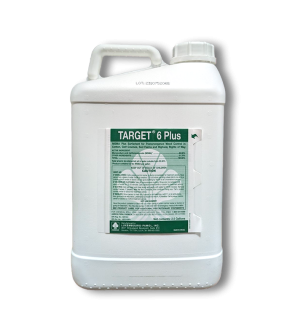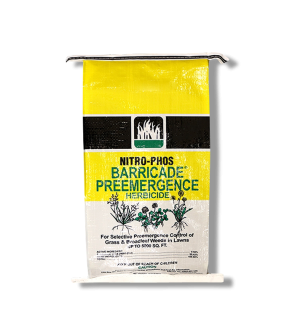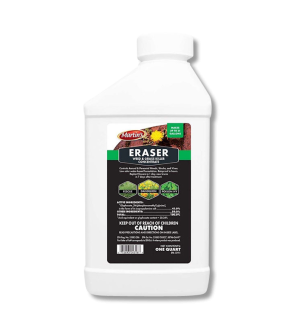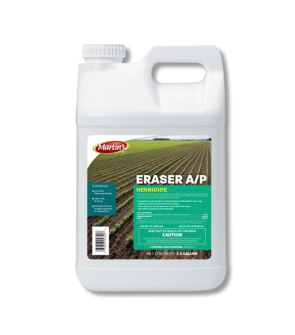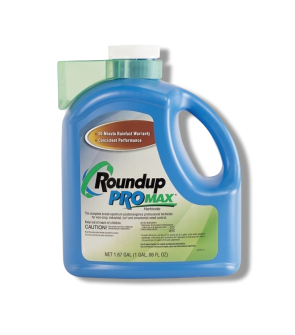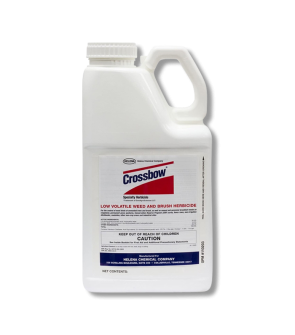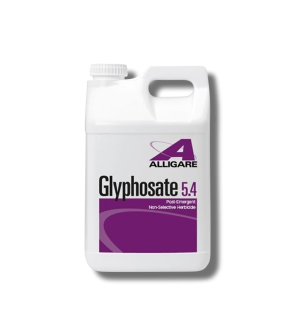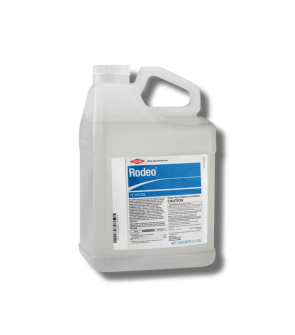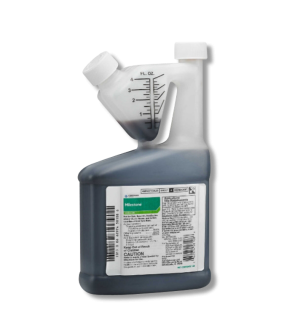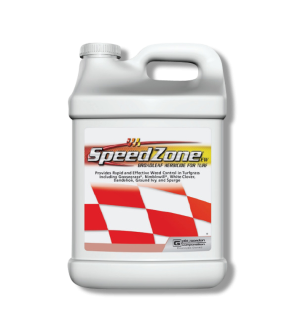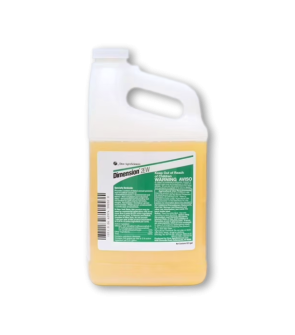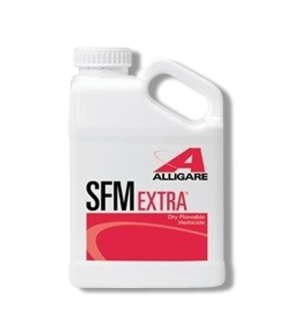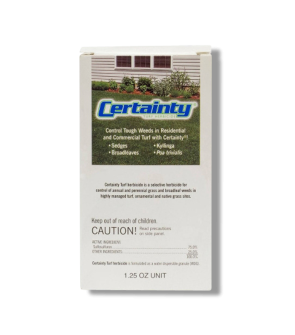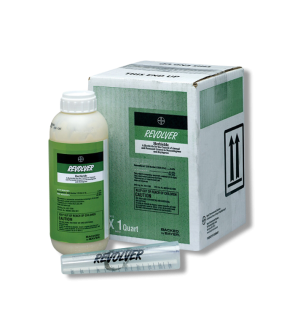Gain access to personalized product screening, the best pricing, rewards, and more!
Most Effective Products
Chickweed Control: How To Get Rid of Chickweed
Chickweed is a common pesky winter weed that landowners have to deal with annually. There are three species of chickweed: common, star, and mouse-ear.
Homeowners tend to overlook the growth of chickweed in the fall and usually notice its presence in the spring when it begins to grow vigorously in thin and bare spots of the lawn. By the time action is taken, the weed has already disbursed seeds for next year and will die alone. Seeds will then lie dormant until the cooler weather of fall arrives, and then they will germinate and grow throughout the winter.
If you have chickweed on your lawn, our DIY guide can help. Lawn care experts put together the instructions below and will show you how to properly conduct chickweed treatment so this plant no longer dominates your yard.
Identification
Before you can carry out a treatment application, you must be sure you are dealing with chickweed and not some other invasive plant. Misidentification of weeds can lead to using the wrong treatment method, resulting in wasted time and money. Here are some traits to help you to identify chickweed:

- Chickweed is a winter annual weed. Many homeowners notice patches growing in late winter or early spring. There are three variations of chickweeds you could find on your lawn. The first is known as common chickweed. It is common in yards, gardens' edges, and more. It has simple lance-shaped to ovate leaves that are smooth along the margins. It has a small white flower, which appears to have ten petals, but it is just because of the split in the petals. Chickweed is also edible and known for its pleasant taste.
- The second type of chickweed is mouse-ear chickweed. It is also common in lawns but grows a little further away from the home. It is named Mouse-ear Chickweed because of how hairy it is. The leaves are just like common chickweed in shape and along the margins; however, the stem is red rather than green. The white flower is the same as common chickweed.
- The third type of chickweed is star chickweed. It is commonly found in the Eastern woodlands, where it is native. This plant is a little larger in size but grows in less dense clumps than its other two relatives. The leaves and flowers are the same shape and have the same features; however, the flowers and leaves are much larger overall. The stem is red, and there are fine little hairs that run its length.
- Chickweed in lawns typically grows in patches up to 2 inches in height. It has ovular, pointed, opposite leaves, and the flowers are small, with five white petals that appear split down the middle.
Use the description above and the images to help you to identify whether chickweed is on your lawn. If you need help, contact us, and we will help you properly identify your lawn weed.
Inspection
After you have confirmed that you are dealing with a type of chickweed, proceed with an inspection. Walk through your yard to observe the infestation of chickweed. Depending on your severe chickweed issue, your approach can be either a manual or chemical means of control or a combination of both.

Where to Inspect
Chickweed grows well in areas with poor drainage. Look around your property and note areas shaded throughout the day or where the soil is compacted. After normal rainfall, note spots in the turf where puddles form.
What To Look For
Because of the multiple species, chickweed can vary in appearance but look particularly for plants with small egg-shaped leaves that grow in clumps.
Treatment
Before handling any chemicals, wear personal protective equipment (PPE) for safety.
To kill any chickweed on your lawn, use a post-emergent herbicide labeled for chickweed control. Check out Eraser. Eraser is a non-selective weed killer made with glyphosate. Glyphosate is a very powerful ingredient, however, it is non-selective, meaning the product will affect and kill any plant it is applied to.
Step 1: Mix and Apply Eraser
Eraser contains 41% Glyphosate as an active ingredient and is the best weed killer for Chickweed. Eraser works systemically through the foliage down to the root, killing the entire plant within days. Keep in mind that Eraser is a non-selective herbicide and thus is a kill-all treatment.
Use Eraser 41% as a spot treatment, but be careful not to get the chemical on any of your desired vegetation. An indicator dye like Vision Pro Max mixed with the spray application will help you keep track of where you spray so you don't accidentally spray on your desired grass.
Measure the square footage of the treatment area to determine how much Eraser 41% you need. To find the square footage, measure the treatment areas' length and width in feet, then multiply them together (length X width = square footage).
For spot treatments, 2.5 oz. of Eraser 41% in a gallon of water can treat 300 sq. ft.
Mix the appropriate amount of product into your sprayer with Vision Pro Max indicator dye (at a rate of 6 to 10 fl. oz. per 100 gallons of spray solution) to help you keep track of where you spray. Agitate the sprayer, and you will be ready to spray.
Once you’ve completed your solution, spray any chickweed on your lawn directly with low pressure. Use a fan spray setting to thoroughly coat the weed's leaves, spraying to the point of wet but not runoff. To prevent spray drift, you can block off surrounding areas with cardboard.
When finished, allow treated areas to dry completely before allowing people or pets back in. You should start to see weeds dying within 4 to 6 weeks.
Step 2: Monitor and Re-Apply As Needed
If the chickweed is particularly persistent and problematic, repeat applications of Eraser may be needed after 7 to 10 days. It's best to spot-treat your problem areas in general.
You also want to be careful not to treat newly seeded lawns until they have had a chance to mature. The best way to gauge this is to wait until you have mowed your new lawn at least three times. Otherwise, the Eraser weed killer may also harm the tender new grass.
Prevention
Once chickweed has been eliminated from your property, you must take on some preventative practices to keep chickweed from returning. Listed below are some preventative measures to prevent chickweed:
- If chickweed is a problem that persists year after year, then consider laying down a pre-emergent herbicide with prodiamine. We recommend you use a product like Barricade. When applied properly, Barricade will form a chemical barrier that will stop weed seeds from sprouting. It will not affect weeds that are already established. To prevent chickweed, we recommend you apply it during fall before the soil temperatures cool to below 70 degrees. Barricade is a granular herbicide, so you’ll need a broadcast push spreader to apply it. Depending on your turf type, you’ll apply at the labeled rate of 1.5 to 4 pounds of product per 1,000 square feet of treatment area. Broadcast half your granules in parallel lines once across the area. Then, broadcast the other half at a perpendicular angle to cover the entire area. Once the product is fully applied, water it in. Most effective control can be achieved with at least half an inch of water within 14 days of application. When applied properly, barricades will prevent weeds from emerging on your lawn for the winter season.
- Another way to prevent chickweed is to address drainage issues. Chickweed normally grows in areas with poor drainage. Don't water frequently; use organic mulch to make it tougher for germinating chickweed seeds. Last but not least, maintaining a thick, vigorous lawn can choke out any chickweed seedlings from growing or trying to take over, so keep a good lawn maintenance schedule.
Key Takeaways
What is Chickweed?
- Chickweed is a wild, edible, green, leafy plant that grows predominantly throughout European and North American climates. It is one of the most common weeds in residences as its seeds are easily transported.
How To Get Rid of Chickweed
- We recommend treating chickweed post-emergently with spot treatments of Eraser Herbicide, the best weed killer for chickweed.
Preventing Chickweed Reinfestation
- Prevent chickweed establishment by applying Nitrophos Barricade, addressing drainage issues on your lawn, and regular lawn maintenance.






